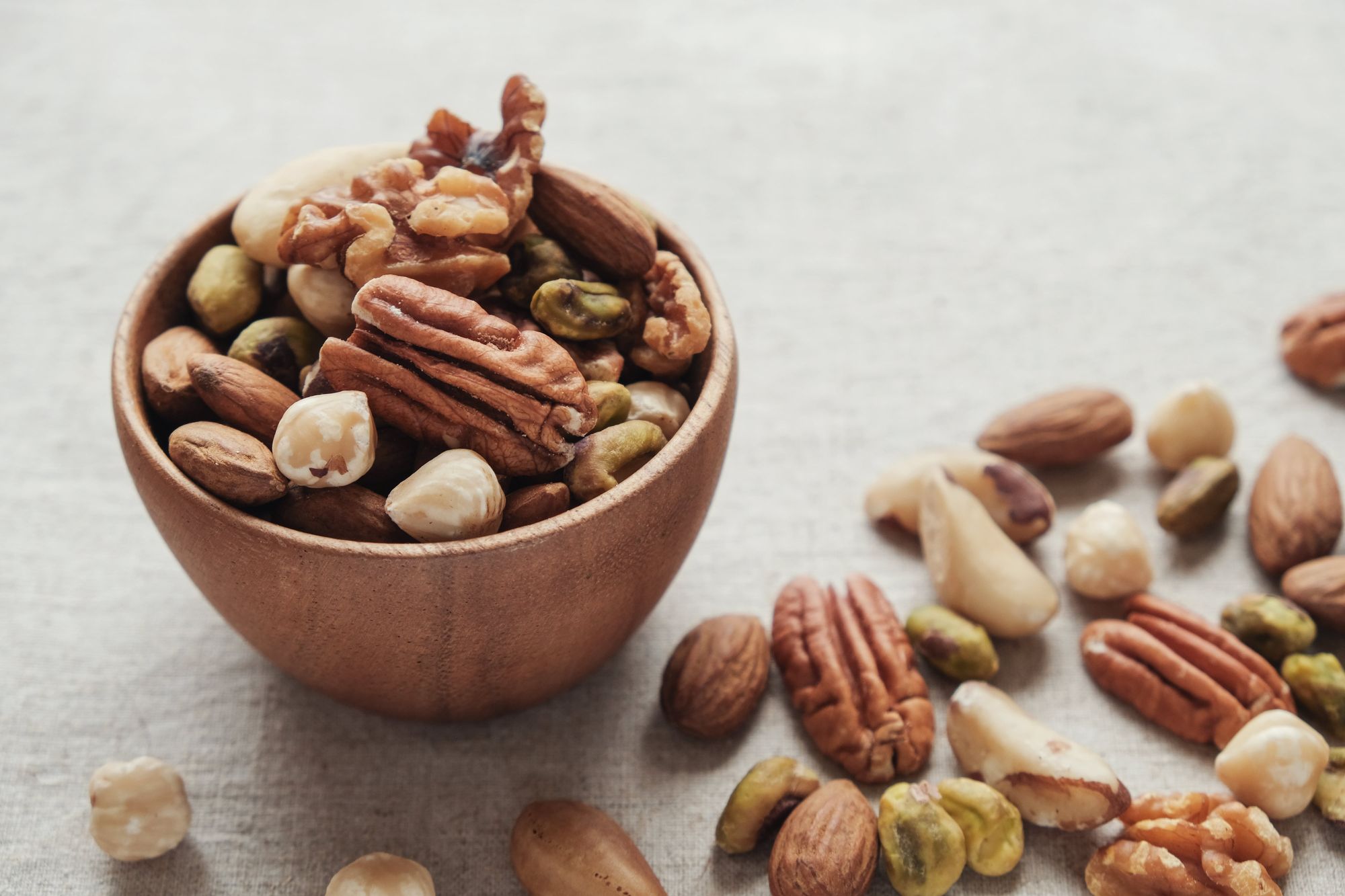
Eating a balanced diet composed of the five main food groups is essential for optimal health and wellness. However, many people don’t consume enough of one or more of the main food groups. This means their diet is not balanced enough. Studies show that what you choose to eat (or not eat) could increase your risk factors for diabetes, stroke, heart disease, and cancer. Depriving your body of nourishment equates to poor nutrition and poorer immunity, which could increase your propensity to illness.
Not only do we need to get the right amount of the 5 main food groups, but we also need to eat plenty of nutrient dense foods to give our bodies the nutrition it needs.
According to Harvard’s Healthy Eating Plate Guide, a balanced diet means eating a variety of foods from the five main food groups.
The five main food groups are:
- Fruits and vegetables
- Carbohydrates
- Protein
- Dairy
- Fat (ideally healthy fats)
Each component of the five main food groups provides different vitamins and minerals that your body needs to function optimally. As much as possible, you should strive to incorporate the five components into your meals. However, with hectic schedules, it may be impossible to include all five for every single meal. In this instance, it is crucial to strive for balance among all the groups throughout your day or across the week. Check out how the five main food groups fuel your body, and how much of a serving you should have for each:
1. Fruits and Vegetables
Fruits and veggies, often called ‘glow’ foods, play a crucial role in good health, so ⅓ of what you eat daily ought to include produce such as fresh fruits and vegetables. A balanced diet must consist of at least five portions of fruits and veggies every day. In every meal, they ought to take up at least half of your plate. That’s because fruits and veggies are packed with critical vitamins and minerals that nourish your cells, beef up the immune system, and prevent disease. Moreover, fruits and veggies contain fiber which aids in digestion, keeps the bowels healthy, and lowers cholesterol.
Notably, different colors of vegetables and fruits also contain a diverse set of nutrients, which is why many nutritionists say that you should strive to eat a rainbow every day. Apart from tickling your palate and helping you embrace different flavors, eating a variety of glow foods plays a huge part in keeping the human body healthy. Fruits and veggies are also low in calories and fat so they’re excellent for bulking up your meals and making you feel sated without adding excessive calories. It’s easy to get your five servings a day if you spread them out. You can try the following:
- Add strawberries or bananas to your breakfast cereal, yogurt, or toast
- Include a bowl of salad with lunch and dinner
- Eat a piece of fruit for your snacks, instead of junk food
- Cut up veggies such as carrots or celery for healthy snacks on the go
- Make vegetable soup
- Drink smoothies
- Enjoy a fruit salad

2. Carbohydrates
Carbs have gotten a lot of bad rap these days, but some types of carbs are healthier than others, and carbs give you energy. They are an essential part of the five main food groups. Carbohydrates are your body’s main source of energy, unless you’ve trained your body to use fat for fuel through ketosis.
Most people need the energy from carbohydrates to perform daily activities. More importantly, your body utilizes starch for essential organ functions like regulating temperature, digestion, and more, so carbs could be part of a healthy diet.
Dietary guidelines recommend that your diet should consist of 45% to 65% carbs your total daily calorie intake. Aim for 3 to 5 servings per day of unprocessed carbs. The quality of the carbohydrates you choose matters because starches are not created equal. Fill up your plate with healthier options such as the following:
- Whole grain cereal
- Whole oats
- Whole wheat bread
- Black or brown rice
- Sweet potatoes
- Whole wheat pasta
Opt for wholegrain and unprocessed grain as much as you can since they contain more fiber and nutrients. Studies show that eating whole grains reduces your risk of heart disease, stroke, and type 2 diabetes. They’re not only healthy for you, but they make you feel full for much longer. In contrast, refined carbs like white rice or potato chips have been heavily processed and they’ve lost much of the grain fibers. These processed carbs tend to spike blood sugar and stimulate cravings. It’s critical to read labels when you shop to ensure you get whole grain products.
3. Protein
Your body needs protein food sources since these provide amino acids. Proteins are often called ‘grow’ foods since they are the building blocks of the human body. The body is composed of billions of cells that undergo growth, development, and renewal daily. All of these need amino acids, which is why your diet must have 10% to 30% of the protein in your daily calorie intake. This means eating around two to three servings of protein per day.
Different types of protein provide a variety of nutrients to keep you healthy and strong. It’s important to vary your protein sources to make sure you get everything that your body needs. There are many protein sources to choose from when meal planning, including:
- Eggs
- Lean meat
- Poultry
- Fish
- Nuts and seeds
- Tofu or tempeh
- Beans
Bear in mind that eating one protein source excessively, such as consuming too much red meat, could also be detrimental to your health as this increases the risk of cardiovascular disease. When buying meat, choose lean cuts and limit intake of processed meat like cured ham, bacon, and sausages as these contain more nitrates and sodium.
Check out these healthy alternatives to cured meats.
4. Dairy
Dairy is part of the five main food groups, and it is recommended that you aim for 3 servings a day. It is also an excellent source of protein, vitamins, and minerals. One of the most important nutrients that dairy is known for is calcium. You need this for strong bones and healthy teeth.
When choosing dairy, opt for dairy sources that are low in fat or contain healthy fats. That means opting for natural greek yogurt instead of sugary full-fat ice cream. Remember that some dairy products like various kinds of cheese and flavored yogurts could be high in salt, sugar, or fat. Make it a habit to check the labels of all dairy products.
If you are lactose intolerant or are sensitive to dairy, you can opt for plant-based alternatives to milk such as soy milk, almond, cashew, oat, or rice milk. Choose unsweetened varieties fortified with vitamin b12, calcium, and vitamin D.

5. Healthy Fats
People tend to fear fat because of what it could do to your physique. But fat is an essential part of the five main food groups. You need fat to protect your organs and absorb fat-soluble vitamins. However, you must be careful when choosing your fat source, and stick to healthy fats like avocado or olive oil. Good fats contain good cholesterol or high-density lipoprotein which is known to protect the heart.
That being said, fats must still be consumed sparingly with a maximum fat intake of 70 grams per day. Of that amount, there should not be more than 20 grams of saturated fat. Unfortunately, saturated fats are abundant in butter, cheese, cakes, cookies, red meats, and junk foods. You must keep your heart healthy by minimizing saturated fats and choosing healthy fats that come from olive oils, fatty fish, nuts, and seeds.
How to Eat a Balanced Diet With the 5 Main Food Groups
A balanced diet includes foods from the five main food groups. Each of the 5 main food groups are designed to keep you healthy and strong. When there are no gaps in nutrition, you maintain optimal health and reduce your risk of disease. Eating a balanced diet also means you don’t go overboard or indulge in excessive treats like chips or cake with poor nutritional value.
But what about people who do a no-carb or low-carb diet? Those who follow keto or LCHF (low carb high fat) programs eliminate almost all starchy carbs and prioritize healthy fats and protein. They may incorporate low-carb veggies like leafy greens. This diet works for some as it could control blood sugar and boost weight loss. People with sensitivities to gluten, a primary protein found in starch, also tend to limit their carb intake because of their unique needs.
However, a diet that prioritizes one food group over the other could result in nutritional deficiencies. If you’re thinking of undergoing any diet, it’s advisable to consult your doctor to make sure that your body could sustain your eating program. For example, people who have a family history of heart disease may not do well with an LCHF diet as this prioritizes the consumption of fats.
If you want to know the optimal diet for you, and how to eat the best balance of the five main food groups that suit your genetic makeup best, it would help to take a CircleDNA test. Apart from sharing your ancestry and disease risks, it contains diet and nutrition reports which explain the optimal diet type for you based on your genetic makeup, as well as possible food sensitivities. Furthermore, the DNA test results also indicate if you have higher or lower needs of certain foods or vitamins, based on your genetic composition.
References
- Evaluation of Eating Habits and Their Impact on Health among Adolescents and Young Adults: A Cross-Sectional Study (Sylwia Mizia et.al.) https://pubmed.ncbi.nlm.nih.gov/33920229/
- The Nutrition Source (Harvard) https://www.hsph.harvard.edu/nutritionsource/healthy-eating-plate/
- Fruits and Vegetables (British Nutrition Foundation) https://archive.nutrition.org.uk/healthyliving/healthydiet/fruit-and-vegetables.html
- Eat the Rainbow (Food Revolution Network) https://foodrevolution.org/blog/eating-the-rainbow-health-benefits/
- Whole Grains, Type 2 Diabetes, Coronary Heart Disease, and Hypertension: Links to the Aleurone preferred over Indigestible Fiber (Stephen Lillioja) https://www.ncbi.nlm.nih.gov/pmc/articles/PMC3640698/
- The Nutrition Source Protein (Harvard) https://www.hsph.harvard.edu/nutritionsource/what-should-you-eat/protein/
- LDL and HDL (Center for Disease Control) https://www.cdc.gov/cholesterol/ldl_hdl.htm






Comments are closed.